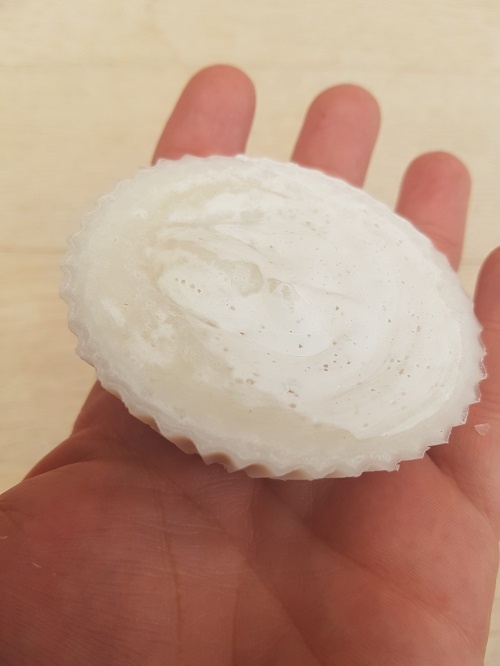Did you know you can use animal fat from your food to make soap from?
It is not hard to collect the fat instead of throwing it in the garbage, so why not!
Lard, or pig fat, produces a moisturizing bar of soap but does
not produce a lot of lather, that is why we combine it with the other oils, to make a perfect recipe.
The main reason to use Lard is, that it is free leftovers from dinner.
I promise you, it will be a wonderful soap, and you will find the soap very moisturizing and gentle.
When you heat the fat, remove all impurities before mixing the fat with the other ingredients.
This recipe is made with Lavender Essential Oil, but you can substitute with your favorite oil as you prefer.
Oils used in this recipe
Here are links on where to buy the oils used in this recipe.
Please support www.Soap-Recipes.com by using our affiliate links to Amazon.com.
Recipe percentages, lye, and superfat
Information for advanced soapers
- 42% Lard, Pig Tallow
- 27/ Coconut Oil, 76 deg
- 27% Olive Oil
- 4% Castor Oil
- 38% Water percent of oil weight
- 27.3% Lye Concentration
- 5% Superfat
- 0.5 Fragrance ratio
Soap Quality
| Soap Quality | Range | This Recipe |
| Hardness | 29 – 54 | 44 |
| Cleansing | 12 – 22 | 18 |
| Conditioning | 44 – 69 | 51 |
| Bubbly | 14 – 46 | 22 |
| Creamy | 16 – 48 | 29 |
| Iodine | 41 – 70 | 53 |
| INS | 136 – 165 | 160 |
Recipe for Easy Soap with Lard
Easy Soap Recipe with Lard
Equipment
- 2 plastic, glass, or steel bowls
- Wooden or plastic spoon
- Silicone molds
- Stick blender
- pH meter or test strips
- Microwave oven
- Kitchen scale
- Thermometer
- Safety gear
Materials
- 5.08 Lard 144 grams
- 3.23 Coconut Oil, 76 deg 92 grams
- 3.23 Olive Oil 92 grams
- 0.46 Castor Oil 13 grams
- 0.38 Lavender Essential Oil 11 grams
Instructions
- Read the soaping safely page, if you haven´t already
- Dissolve NaOH in the water by slowly adding the NaOH to the water and stirring gently with the spoon. Leave the mixture, now called lye, to cool down
- Melt Coconut Oil and mix it with the rest of the ingredients
- Wait until the lye is between 86 and 104 degrees F (30-40 degrees C) and heat up the oils to approx the same temperature if needed
- Mix the oils and the lye by slowly pouring the lye into the oils, blending it little by little
- Use a stick blender for 1-5 minutes until trace
- Pour your batter into a mold or molds as you prefer
- Check if the soap is firm enough to cut and unmold after 48 hours
- Cut the soap bars (if you used a big mold) and trim the edges
- Leave to cure e.g. in a paper bag for 4 – 6 weeks and check pH. Store it by room temperature
Soap Characteristics
| Lauric | 13 |
| Myristic | 6 |
| Palmitic | 18 |
| Stearic | 7 |
| Ricinoleic | 3 |
| Oleic | 40 |
| Linoleic | 6 |
| Linolenic | 0 |





